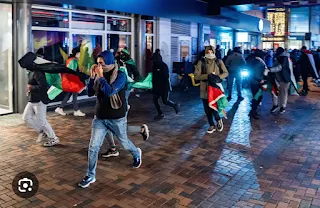Dear 222 News viewers, sponsored by smileband,
Relationship Between Donald Trump and Recep Tayyip Erdogan
Throughout his presidency, Donald Trump developed a unique and complex relationship with Turkish President Recep Tayyip Erdogan. Known for his unconventional diplomatic style, Trump often took personal approaches to world leaders, and Erdogan was no exception. Their relationship, however, was marked by both moments of cooperation and instances of tension, reflecting the complicated ties between the United States and Turkey.
Background of the Trump-Erdogan Dynamic
The Trump-Erdogan relationship developed within a challenging geopolitical context. Turkey is a NATO ally, yet often finds itself at odds with Western interests due to its geographic and cultural position, bridging Europe, the Middle East, and Central Asia. The two leaders shared similar strongman political styles, which appeared to foster a mutual understanding despite their countries’ complex interests. Trump’s willingness to engage with Erdogan more personally was distinct from the more institutional approach of past U.S. administrations.
Key Moments of Collaboration
One of the most notable moments in Trump’s approach to Erdogan was the decision in 2019 to withdraw U.S. troops from northern Syria, effectively allowing Turkey to proceed with its military operation against Kurdish forces in the region. The move was highly controversial, as the Kurdish forces had been key U.S. allies in the fight against ISIS. Trump faced criticism from both parties in the U.S., but he defended the decision by emphasizing a reduction of U.S. military involvement abroad. Erdogan saw the move as a favorable shift, enabling him to pursue Turkish security interests along the Syrian border.
Additionally, Trump often spoke positively of Erdogan, calling him a “tough” but “good” leader and, on numerous occasions, referenced their strong personal relationship. This approach led to increased diplomatic flexibility, including on contentious topics such as Turkey’s purchase of the Russian S-400 missile defense system, which challenged NATO protocols. While Trump ultimately imposed some sanctions on Turkey, he took a notably measured approach, which many saw as a means of avoiding a major diplomatic crisis.
Points of Tension
Despite instances of cooperation, the Trump-Erdogan relationship was far from harmonious. The decision to impose sanctions on Turkey in 2018 in response to Turkey’s imprisonment of American pastor Andrew Brunson led to a rapid escalation of tensions. Trump’s tariff increases on Turkish steel and aluminum caused the Turkish lira to plummet, showcasing the power imbalance between the two countries. Erdogan initially resisted pressure but ultimately released Brunson, demonstrating that Trump’s approach could yield significant concessions.
The issue of Turkey’s S-400 purchase remained a sore spot. Turkey’s decision to acquire the Russian-made defense system led the U.S. to exclude Turkey from the F-35 fighter jet program, as the S-400 was viewed as a threat to NATO’s integrated defense systems. Trump’s sanctions on Turkey were viewed as relatively mild, reflecting his reluctance to alienate Erdogan entirely, but they marked a clear point of divergence between U.S. national security interests and Turkey’s sovereign decisions.
Economic and Diplomatic Realities
Economics also played a role in the Trump-Erdogan dynamic. Turkey relies heavily on international investments, and its economic stability is tied to its relationships with powerful economies, including the United States. Erdogan was aware of the risks posed by alienating Washington but saw Trump’s presidency as an opportunity to advance Turkish interests amid the fluctuating diplomatic environment of the time. Trump, who favored bilateral deals and saw value in personal diplomacy, seemed willing to take a pragmatic approach to trade and defense, despite challenges from both domestic and NATO allies.
Aftermath and Long-Term Implications
Trump’s approach to Erdogan left a lasting impact on U.S.-Turkey relations, setting precedents for future administrations. His willingness to engage Erdogan directly and maintain a relationship of personal diplomacy—despite notable differences—may have emboldened Turkey in its regional ambitions. The Biden administration, however, has taken a more traditional and cautious approach, placing greater emphasis on multilateral cooperation through NATO and pressing Erdogan on human rights issues and democratic reforms.
The Trump-Erdogan relationship underscores the challenges and potential benefits of personal diplomacy between world leaders. While Trump managed to leverage personal rapport to achieve specific outcomes, this approach left unresolved issues, including Turkey’s alignment with NATO values, that have continued to complicate U.S.-Turkey relations. As Erdogan’s role in regional politics remains strong, the foundations laid during the Trump years serve as a reminder of how leadership styles and personal dynamics can significantly shape the international stage.
Conclusion
The relationship between Donald Trump and Recep Tayyip Erdogan is emblematic of the broader complexities in U.S.-Turkey relations. Trump’s approach, centered on pragmatism and personal engagement, allowed for some key diplomatic breakthroughs but ultimately left unresolved tensions, especially in areas of military and strategic alignment. Their relationship highlights the balancing act required when engaging with influential regional powers like Turkey, where diplomatic, economic, and military interests often collide.
Attached is a news article on the Turkish president and trump as trump is welcome on his second term as president of America
https://www.reuters.com/world/erdogans-friend-trump-played-role-strained-turkey-us-ties-2024-11-08/
Article written and configured by Christopher Stanley
<!-- Google tag (gtag.js) --> <script async src="https://www.googletagmanager.com/gtag/js?id=G-XDGJVZXVQ4"></script> <script> window.dataLayer = window.dataLayer || []; function gtag(){dataLayer.push(arguments);} gtag('js', new Date()); gtag('config', 'G-XDGJVZXVQ4'); </script>
<script src="https://cdn-eu.pagesense.io/js/smilebandltd/45e5a7e3cddc4e92ba91fba8dc








